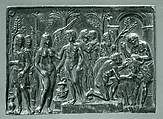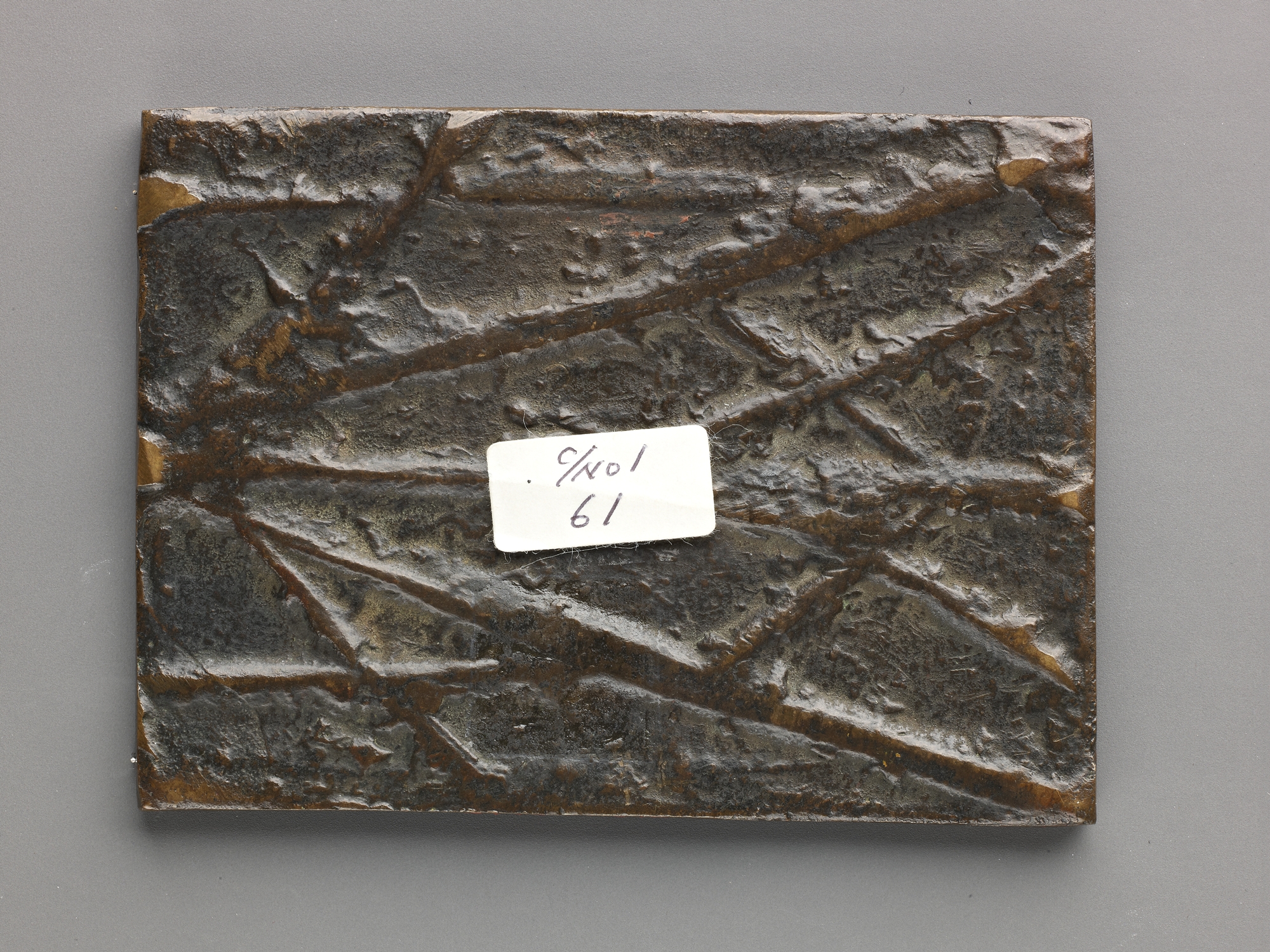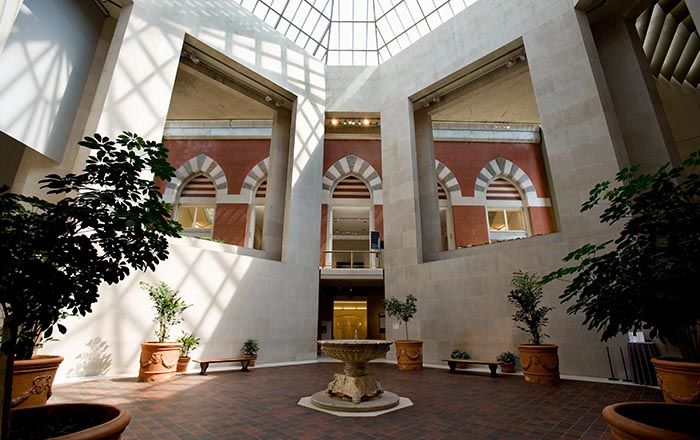Allegory of Triumph and Sacrifice
Attributed to Andrea Briosco, called Riccio Italian
Not on view
The plaquette depicts an allegory of Triumph and Sacrifice, with a nude youth standing on a podium in the center, flanked by a winged Victory and two female attendants; to his right are two men slaying an ox. Two men in the background play flutes, a third carries a laurel branch. The reverse has a rarely observed surface of radiating lines in a herringbone pattern. It is a feature that this plaquette has in common with at least four others by or attributed to Riccio. Two of these also represent the allegory of Triumph and Sacrifice (National Gallery of Art, Washington, D.C.), and the mutual subject strongly points to an origin of all three from the same workshop. No satisfactory explanation has been given for the presence and purpose of the pattern; although it seems unlikely that it formed part of the casting system of vents and runners, there is a vague resemblance with the spruing pattern of Ghiberti’s panels for the Gates of Paradise.
Due to rights restrictions, this image cannot be enlarged, viewed at full screen, or downloaded.
This artwork is meant to be viewed from right to left. Scroll left to view more.




